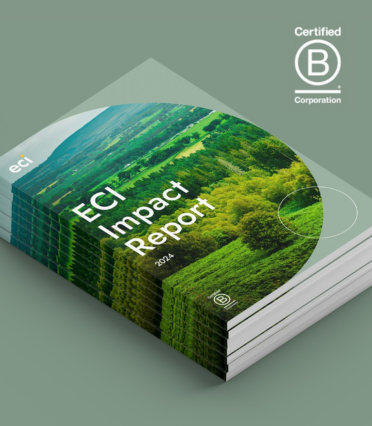When it comes to maximising the valuation of a business, driving a high EBITDA multiple is one of the key ingredients to achieving a successful exit. Whether you are aiming for a buyout, trade sale, or IPO, the strategies you adopt can significantly influence the multiple your business commands.
At our recent ECI Digital Summit, Daniel Bailey shared his insights into some key drivers that lead to a high multiple in a sale. Here are his four essential tips.
1. Focus on profitable growth
The most critical factor in driving a high multiple is growth, but not just any growth, profitable growth. This is something which has come very much back into fashion since 2021 and that has always been important to ECI. Businesses that can grow their revenues while maintaining or improving margins are far more attractive to growth buyout investors (like us) and often, for higher margin businesses, the EBITDA multiple an investor is willing to pay can deliver a higher valuation than a comparatively lower revenue multiple. Hence, margins can matter for optimising a company’s valuation.
Rule of 40 companies, those that have a combined growth rate and EBITDA margin that sum to greater than 40%, are generally considered to be very attractive businesses and typically command higher multiples from investors. There are different ways that a company can achieve Rule of 40 status. For instance, a company with 20% revenue growth and a 20% EBITDA margin qualifies as a Rule of 40 company, but so does a company growing at 60%, whilst funding 20% losses. Our consistent preference over many years has been to support companies that exhibit the former set of metrics and, as mentioned, there has been a general shift in the market in the last couple of years from many investors to favour this approach.
Demonstrating the long-term prospects for your company’s growth also drives a high multiple. Businesses in large and growing addressable markets are particularly attractive.
2. Build a high-performing and ambitious team
A company’s leadership team is often a make-or-break factor for buyers. A great management team – one that is highly capable and also demonstrates strategic vision and operational excellence – typically drives a higher multiple.
Management teams are integral to delivering both growth and resilience. On the former, a strong team gives investors confidence that a business will execute upon the opportunity ahead of it and hit the targets that the investor bases its pricing on. On resilience, it will give an investor comfort that a team is able to deal with any unforeseen future challenges that a business may face. Additionally, investors will not have to invest significantly to supplement the team post-deal to build that capability.
Beyond the senior executive team, the presence of a strong second tier of management is also important and it creates capacity in the business and can facilitate succession, signalling that the company is well prepared for long-term growth and has resiliency through its team.
All of these considerations ultimately are captured in a buyer’s conviction in the opportunity. It is this conviction which manifests itself in the multiple.
3. Curating competitive tension
Ahead of an exit process, a growing and resilient business with a strong management team will undoubtedly attract significant interest from investors and possibly strategics.
However, it’s important for management teams to continue to successfully scale the businesses that they run and not to become too distracted ahead of or in the early stages of a process, by investor or strategic inbounds. For example, a negative trading variance against budget during a process can really harm a company’s valuation, so management’s time is typically best focused on hitting their targets until prospective investors are well qualified, having done some due diligence and demonstrated an understanding of the market.
Management teams should therefore focus on engaging with the right qualified investors at the right time. Inviting a manageable number of bidders into the process ensures a team can handle investor inquiries and maintain interest. Equally, by going to a number of prospective investors, a process is de-risked allowing for some buyers to drop out of the process if, for whatever reason, their interest wanes. If too many bidders are invited into a process this can also scare investors off, because the odds are too long for them to win and doing deals commands a lot of resource and time, which could be better spent elsewhere. So, it’s a balancing act of getting enough high-quality and qualified parties into the process but not having so many such that management are swamped with questions and bidders aren’t getting what they need.
By the late second stage of a process, if two, three or more bidders that have materially completed their due diligence remain, the vendor shareholders and management team are in a strong position and healthy competitive tension is likely to develop. Each of these buyers will likely have significant sunk costs, both time and money, and have developed conviction. Bidders will likely also know it’s a competitive situation and hence will have to put their very best prices on the table to have the best chance of success.
4. Leverage data for control
In the modern M&A landscape, having good data is imperative. Businesses that can present clean, comprehensive, and well-structured financial and operational data have a distinct advantage. Typically, you see the demands for data grow with each funding cycle, particularly as businesses scale and the investors that support them do also. Companies need to ensure that their internal systems and data are robust, allowing management to retain control of the narrative throughout the sale process.
The rise of AI tools like ChatGPT and other large language models (LLMs), for example, has enhanced the ability of prospective buyers to perform rapid due diligence on large volumes of unstructured data. As a case in point, our Commercial Team was conducting customer sentiment analysis for a large portfolio acquisition. Traditionally this might have cost £20k for an external due diligence provider to scrape the internet or conduct a survey, a process that may have taken two weeks. However, by taking public data from Capterra, G2 and Trustpilot and loading it into Copilot, sentiment data can now be interrogated exceptionally quickly. The result was rich insight into this company’s customers delivered in less than two hours and without any capital outlay or third-party involvement.
A final thought: be prepared for the long journey
A multiple is ultimately a reflection of an investor’s belief in the future growth prospects of a business and therefore its future cashflows. Delivering historical growth with good margins is great evidence for this future opportunity, but to get an even higher multiple, an investor also needs to believe that a company’s potential can be delivered by its management team. If that team can articulate the historical journey the business has been on and the future opportunity ahead of it through data, then an investor can build significant confidence and conviction. If this is delivered alongside an effective sale process, with carefully curated competitive tension, then the business has an excellent chance of optimising its multiple. This all takes time and often investment (e.g. in systems or product), but the payback can be very significant and hence it is worth the endeavour.


